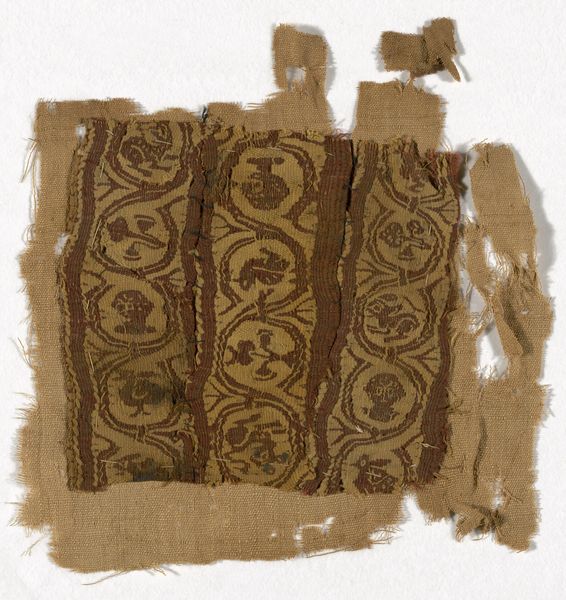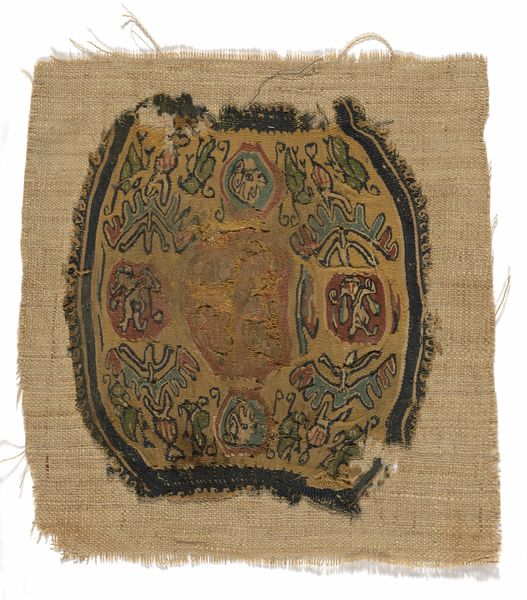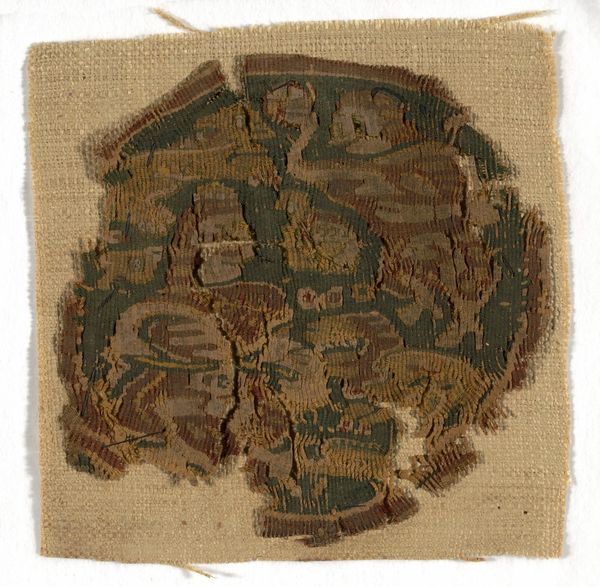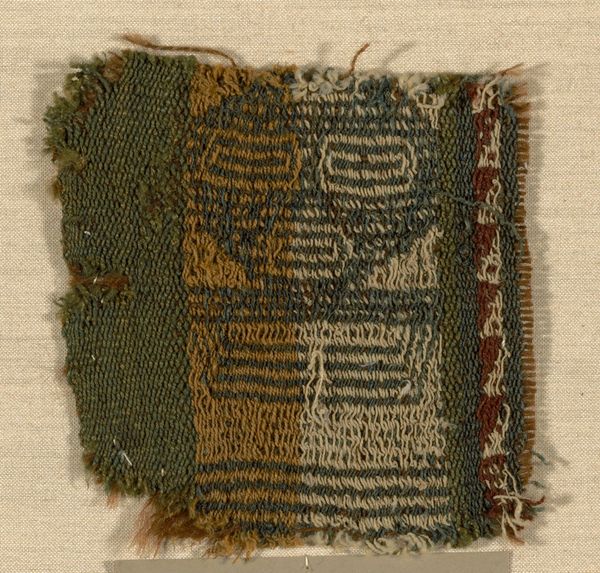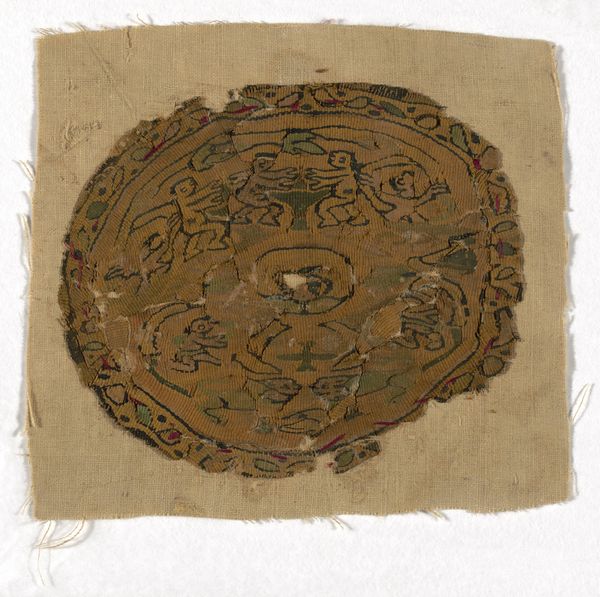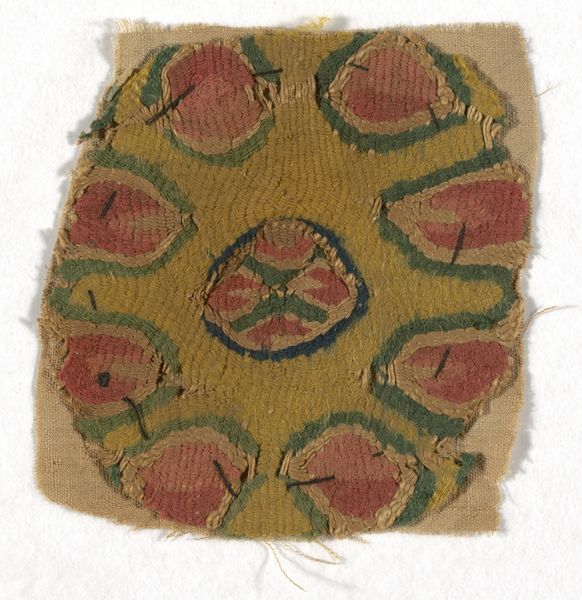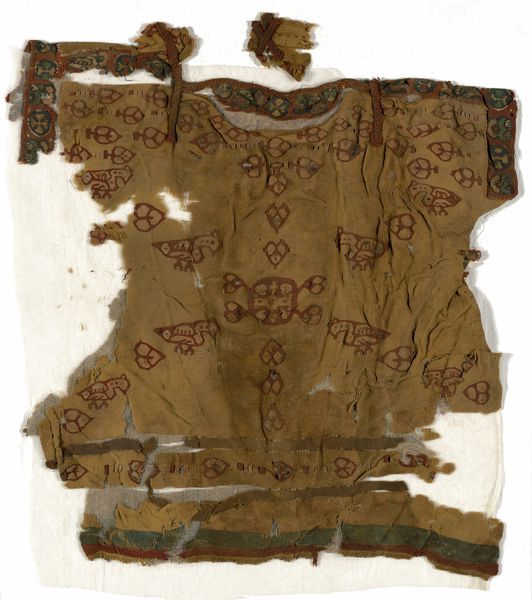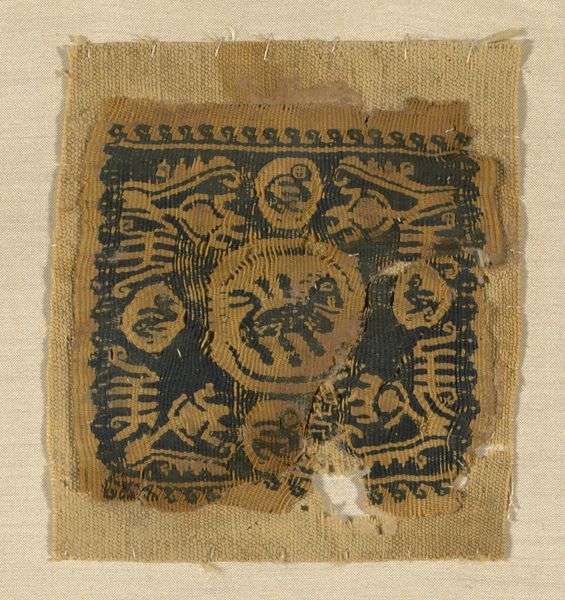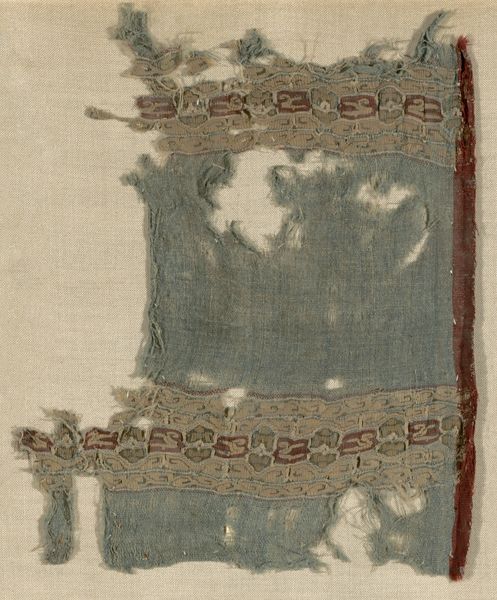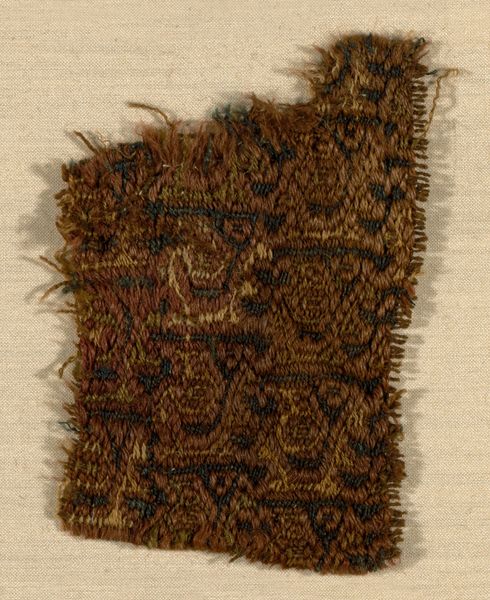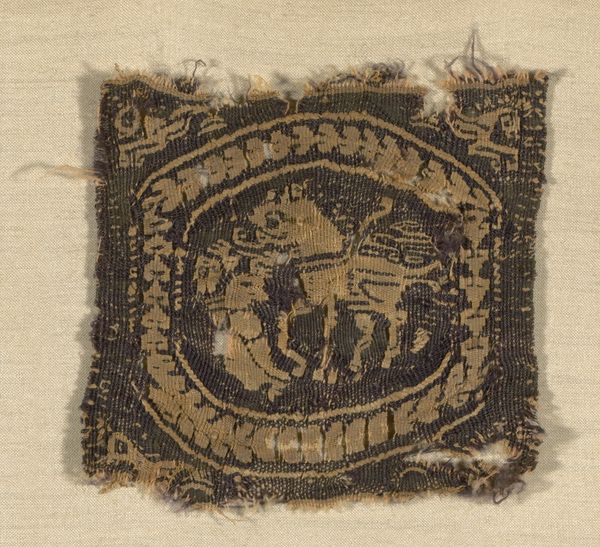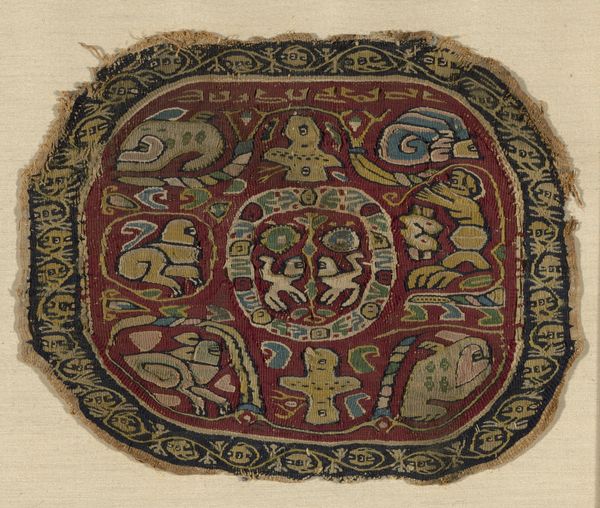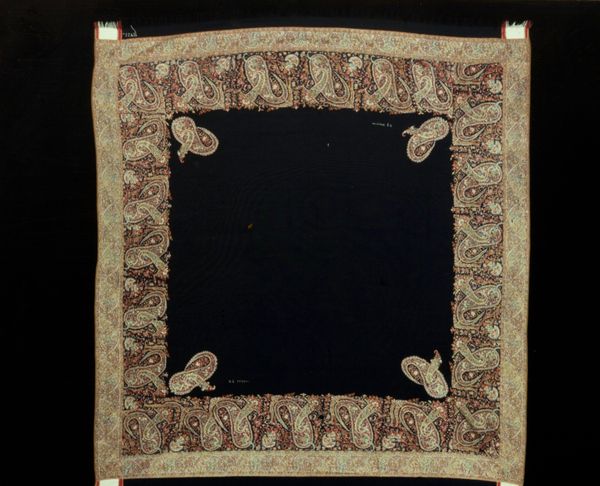
Fragment Roman period (30 B.C.– 641 A.D.)/Arab period (641–969), 4th/8th century
0:00
0:00
weaving, textile
#
weaving
#
textile
#
ancient-egyptian-art
#
ancient-mediterranean
#
mixed media
Dimensions: 14.5 × 10.3 cm (5 5/8 × 4 in.)
Copyright: Public Domain
Curator: Before us is a textile fragment from the Coptic era, crafted sometime between the 4th and 8th centuries, a fascinating point where the Roman and Arab periods intersect. Editor: Immediately, I'm struck by the raw edges and faded palette. There's a weight of history here, a feeling of resilience, but also loss. Curator: Exactly. Think about the Coptic Christians in Egypt during that time, synthesizing Egyptian, Hellenistic, and early Christian symbolism. Notice the weaving; it served both functional and symbolic roles. The motifs, though fragmented, hint at stories, perhaps religious narratives. Editor: Yes, and what stories those could be. We’re looking at a mixed-media piece, but really it's about layers of power. The early Christian community adopting, appropriating, or even subverting symbols that held sway under Roman rule, while later enduring changes when the Arab Caliphate took over. It's resistance woven in thread. Curator: Indeed. These textiles often adorned tunics or served as decorative hangings within churches or homes. They would carry not just beauty but declarations of faith and identity during a politically turbulent period. Think of the skill involved. Imagine the weavers transmitting both technique and symbolic knowledge through generations. Editor: This small textile fragment feels so profound. Seeing this visual vocabulary gives rise to questions about survival. What aspects of pre-Islamic Coptic culture endured? To what degree were older beliefs disguised or reworked into this emerging Christian imagery, creating this mixed aesthetic? Curator: What's wonderful is that, as a fragment, it invites our imagination to reconstruct its past. The weaving embodies a spiritual, social, and political environment. Editor: Absolutely. This isn't just art; it's tangible evidence of a community forging identity amidst empires. Its survival is significant. This textile demands conversations about how cultural values persevere, even when frayed around the edges. Curator: I agree completely. What appears incomplete is really a potent distillation of a complex story. It's a testament to the enduring spirit embedded within symbolic representation.
Comments
No comments
Be the first to comment and join the conversation on the ultimate creative platform.
